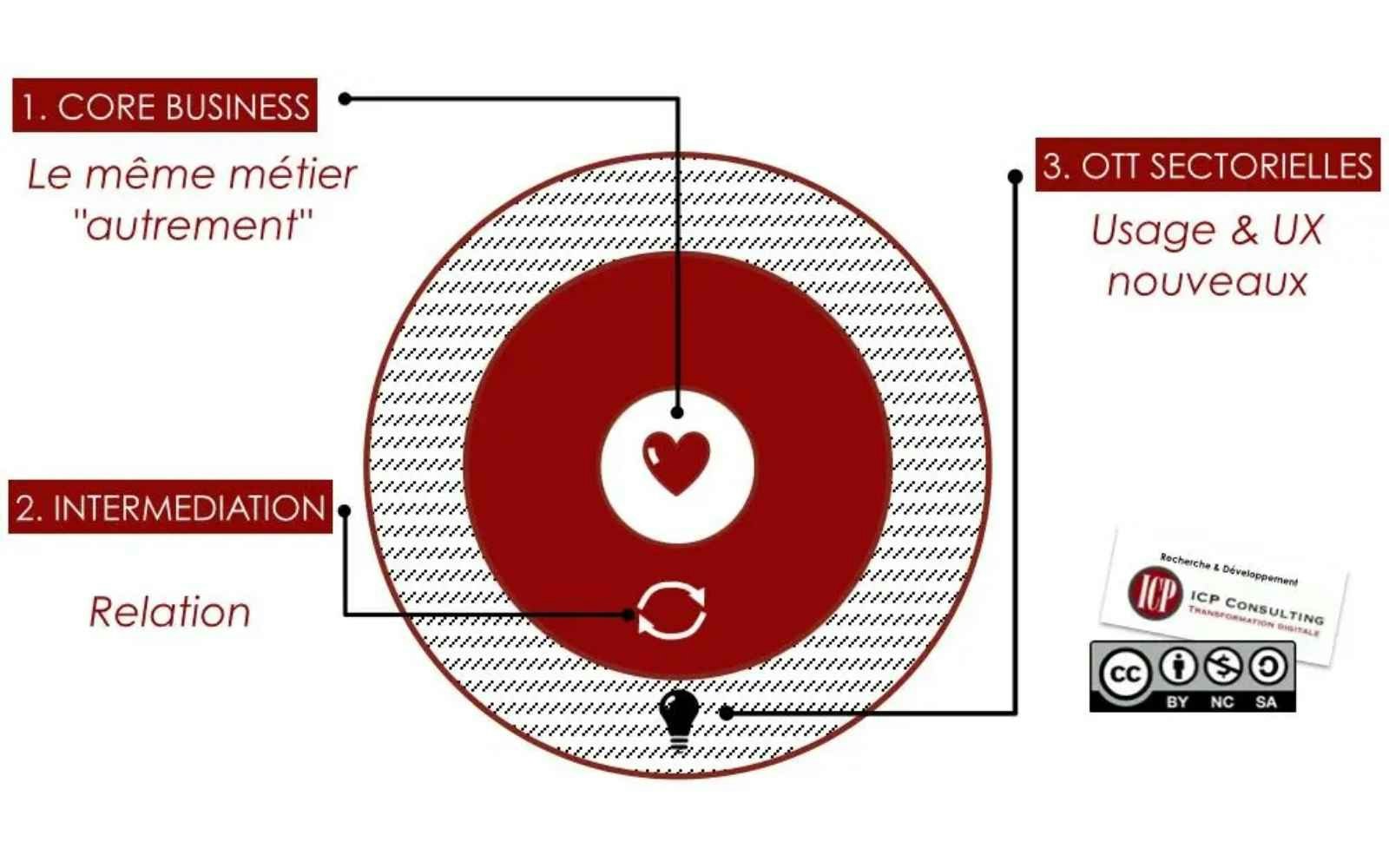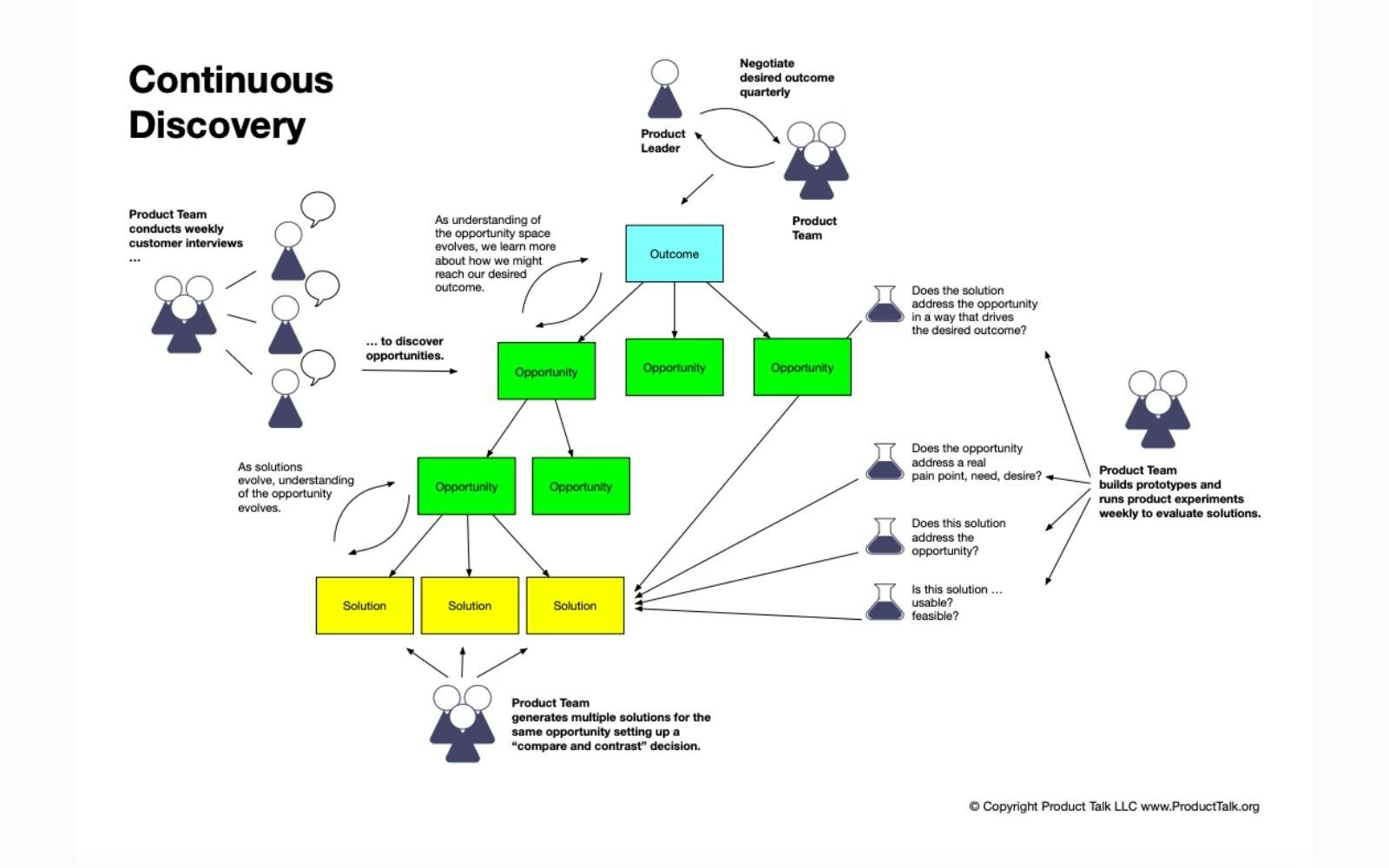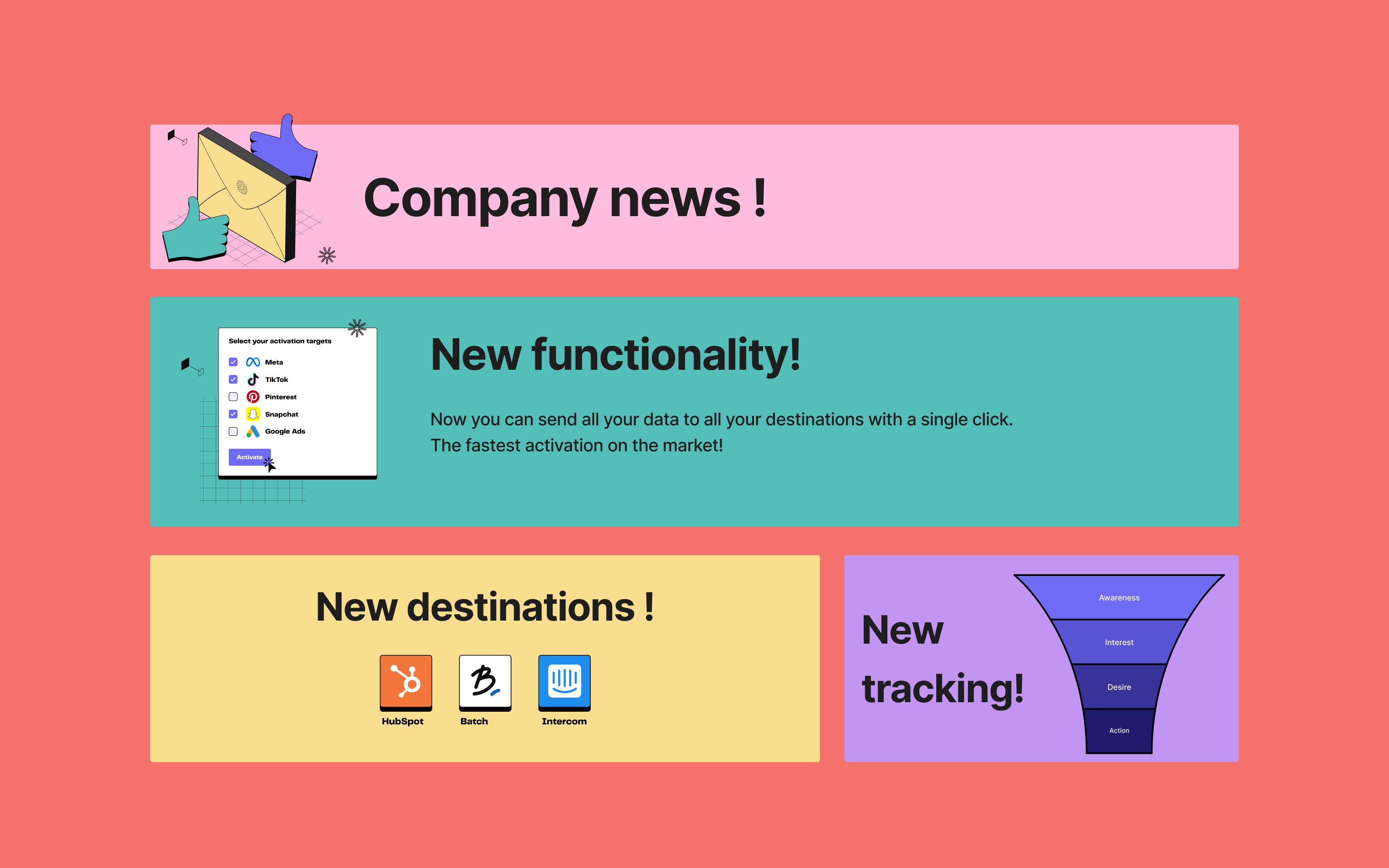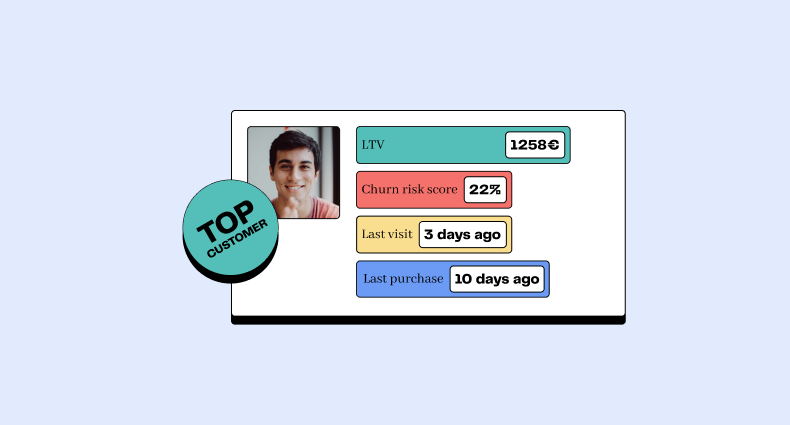
Product-centric vs Customer-centric: Two complementary visions
7min • Last updated on Dec 15, 2025

Olivier Renard
Content & SEO Manager
Steve Jobs once said, ‘It’s not the consumers’ job to know what they want.’ This sentence perfectly captures the essence of a product-centric strategy: visionary, daring, but sometimes risky.
In an age of immediacy and personalised experiences, listening to the customer has become a strategic imperative. The customer-centric approach addresses the limitations of a purely product-oriented model.
Key Takeaways:
The product-centric approach focuses on product quality and innovation. It aims to create its own market, even if that means moving away from consumer expectations.
In contrast, the customer-centric vision puts the client at the heart of decision-making to improve the experience and foster loyalty.
Although often presented as opposites, these two logics are not necessarily incompatible. They can complement each other to build a sustainable strategy.
A Customer Data Platform unifies customer data to guide both marketing and product teams towards greater performance.
���👉 Discover the characteristics of each approach, their respective advantages, and the pitfalls to avoid. Learn how to combine them to better meet your customers' expectations and evolve your strategy. 🔍
What is a product-centric strategy?
A culture focused on the product
A product-centric company places its product at the centre of all decisions. Innovation, technical quality, and differentiation guide its strategy before even analysing market expectations. Several globally recognised brands have successfully adopted this approach.
💡 James Dyson went as far as to mortgage his house to finance the development of his bagless vacuum cleaner. The British inventor, convinced of the superiority of his product, persisted despite over 5,000 prototypes and several years of rejection.
His mantra: 'Failure is much more exciting than success.' Today, the company generates over £7 billion in annual revenue.
Another famous example is Tesla. The American brand imposed high-end electric vehicles at a time when demand was still marginal.

Tesla Roadster (Credit: Tesla Motors Inc.)
The power of innovation
« If I had asked people what they wanted, they would have said faster horses. »
Henry Ford
Imagining what does not yet exist. Betting on product excellence can sometimes disrupt highly competitive markets. A culture of offering that strengthens brand image and ensures complete control over the proposed experience.
Its limits in an experience-focused world
A purely product-centred strategy also carries risks. Chief among them is innovating without ever meeting the market. A disconnection illustrated by the failure of the Segway: an innovative product but lacking a use case that matched consumer expectations.

Segway (Credit: Ajit Sandhu)
Siloed development and technological complexity can also hinder adoption. Time-to-market can be lengthy. As the saying goes, being right too early is indistinguishable from being wrong.
Even pioneers like Netflix experienced this: in 2007, the platform launched its video-on-demand (SVOD) service, at a time when the public still preferred to buy DVDs.
Jér�ôme Wallut proposes a simple framework for understanding how tech companies break into established markets. According to him, beyond digital, it’s usage and customer experience that make the difference. His decoder matrix identifies three types of strategies:
Core business: doing the same job differently
Intermediation: acting as a bridge between the end customer and their supplier
Over-the-top: offering new services alongside existing activities

Decoder matrix (Credit: Jérôme Wallut)
Taking customer needs into account has become essential.
What is a customer-centric company?
The customer as the starting point
« Obsess over customers, not competitors. »
Jeff Bezos
A customer-centric company builds its strategy around the needs, expectations, and behaviours of its customers. Active listening, feedback loops, and personalisation are at the core of the process.
The objective is simple: understand what customers want in order to innovate, going well beyond mere satisfaction.
💡 From its inception, Amazon set out to ‘work backwards’ from the customer. From personalised recommendations to express delivery and simplified returns, every detail is aimed at improving the customer experience.
The online bookstore founded in the 1990s is now the world's fifth-largest company by market capitalisation (Statista).
A modern approach
In an ultra-competitive environment, knowing your customers better also means retaining them better. A customer-centric strategy increases Customer Lifetime Value (CLV) and reduces the churn rate.
It also allows for more precise targeting of marketing actions, with better return on investment.
💡 Sephora focuses on delivering an exceptional customer experience at every stage of the journey: personalised offers, samples and recommendations tailored to skin type, and a loyalty programme.
Every interaction aims to strengthen the customer relationship, not just drive sales.
The trap of the “feature factory”
From a design perspective, placing the customer at the centre does not mean validating every request. Piling on features without a clear vision could lead to a bloated, complex, even incoherent product.
💡 Airbnb incorporates user feedback but prioritises improvements based on their overall impact.
Each new feature (e.g., categories, split stays) is tested, measured, and gradually rolled out.
Product-centric vs customer-centric: what are the differences?
These two strategic approaches are often contrasted: one focuses on product excellence, the other on the customer experience. Each shapes the organisation, performance indicators, and decision-making processes.
Criterion | Product-centric | Customer-centric |
|---|---|---|
Main objective | Create superior, innovative, and technically advanced products. | Meet customer expectations to maximise satisfaction and loyalty. |
Tracked KPIs | Production cost, time-to-market, number of features. | Net Promoter Score (NPS), Customer Lifetime Value (CLV), churn rate, customer satisfaction rate, engagement. |
Internal management | Decisions driven by R&D or the product team, with a focus on the roadmap. | Decisions guided by customer data: marketing, support, and CRM teams are closely involved. |
Iconic example | Dyson: patented technology and product differentiation at the heart of the model. | Amazon: optimised customer experience at every stage, from search to after-sales service. |
Product centric vs Customer centric
Why adopt a customer-centric culture?
Customers expect brands to offer a seamless, personalised, and consistent experience, regardless of the channel used (Medallia). Their buying journey is more fragmented than ever: they compare online and in-store, leave reviews, and expect rapid responses.
Putting the customer at the heart of decision-making is no longer optional. Today, the experience offered is a true competitive lever in saturated markets.
Brands that retain customers are those that deliver the right message, at the right time, to the right person, via the right channel. Customer data plays a crucial role in this context.
By leveraging data from multiple sources, a company can better understand its customers, personalise communications, and measure the impact of every action. This forms the foundation of an effective, sustainable, and measurable customer-centric strategy.
How to shift from a product-centric to a customer-centric vision?
This cultural shift requires rethinking priorities, tools, and decision-making processes.
1️⃣ Reassess your company's vision
It all starts with a simple question: who is at the centre of your decisions? The product or the user?
A product-centric company thinks in terms of features, performance, or technical planning. In contrast, a customer-centric company evaluates each project based on the value it delivers to the customer.
Rethinking the company's vision means putting the user experience at the heart of strategy — and aligning teams around a common goal: increasing engagement and building lasting satisfaction.
2️⃣ Integrate the customer's voice into the product development cycle
Putting the customer at the centre means listening in a structured and continuous way. This involves satisfaction surveys, interviews, feedback tools, and behavioural analysis.
The principle of ‘continuous discovery’, popularised by Teresa Torres, involves integrating customer feedback at every stage of product development. This agile and incremental approach focuses on prioritisation and rapid learning.
The goal: adapt quickly and avoid unnecessary developments. Every piece of feedback becomes an opportunity to improve the experience.

Continuous Discovery (Credit: Product Talk)
3️⃣ Align product, marketing, and customer service teams
A customer-centric strategy only works if teams operate with a shared vision. This means adopting common goals, solutions, indicators, and tools.
A Customer Data Platform (CDP) fosters this alignment. It leverages customer data to provide clear, unified insights across teams. It’s a powerful lever for improving the customer experience at every touchpoint.
Should product-centricity and customer-centricity be opposed?
« We've had three big ideas at Amazon that we've stuck with for 18 years, and they're the reason we're successful:
1. Put the customer first. 2. Invent. 3. And be patient. »
Jeff Bezos
These two approaches are often set in opposition, as if they were mutually exclusive. However, they can complement each other perfectly.
The benefits of a balanced approach
It’s not a matter of choosing between product excellence and customer satisfaction. The most successful companies manage to combine both. They design robust products but stay attuned to user needs and behaviours to evolve.
💡 Apple was long considered a model of a product-centric company. Yet its greatest successes, like the iPod or iPhone, stemmed from keenly observing customer pain points: making music and mobile information easily accessible.
This embodies the principle of a product-led approach: the product drives growth, but relies on customer insights to evolve continuously. It's a lever for acquisition and loyalty.
This logic helps reduce the risk of failure while strengthening loyalty. A useful, well-tested feature placed at the right stage of the user journey can significantly enhance the experience.
How a CDP helps reconcile both approaches
In this context, customer data becomes the convergence point between product and marketing.
A composable CDP unifies data from multiple sources: website, mobile app, support, CRM... It provides a complete, up-to-date view of user behaviour without duplicating data or complicating the architecture.
These insights can then be activated:
On the marketing side, to build audience strategies and personalise campaigns.
On the product side, to identify friction points or opportunities for improvement.
💡 DinMo’s CDP can identify a segment of users with a strong interest in a particular product range. Business teams can then refine the offer, test a new design, and measure the impact.
Conclusion
Product-centric or customer-centric? It's no longer about choosing, it's about finding the right balance. The best-performing companies are those that combine product quality with a customer-focused vision.
👉 By unifying your customer data with a composable CDP, you provide both product and marketing teams with a strong foundation for making better decisions.
Ready to take the next step? Discover how DinMo can help you align product performance and personalisation.
*Source: Product Talk LLC
FAQ
Can an SME adopt a customer-centric strategy?
Can an SME adopt a customer-centric strategy?
Yes, a customer-centric strategy is accessible to businesses of all sizes. For an SME, listening to customers, personalising offers, and improving the experience can become a real lever for loyalty.
With simple tools such as satisfaction surveys, a well-structured CRM, or effective segmentation, an SME can build a strong and lasting customer relationship.
The key is to embed a customer-first culture across all teams from the outset.
What is the link between customer-centricity and the 4Cs?
What is the link between customer-centricity and the 4Cs?
The 4Cs model was popularised by Robert Lauterborn. It refers to Customer (needs), Cost (to satisfy those needs), Convenience (of buying), and Communication. This framework puts the customer at the heart of the marketing strategy.
Customer-centricity fits directly within this logic.
Instead of focusing solely on the product, the company, or the price, a customer-centric approach examines real needs, the effort required, ease of access, and the quality of the communication.
The 4Cs thus offer a clear structure for adopting a customer-oriented vision at every stage of the journey.
What is the difference between a product-led approach and product-centricity?
What is the difference between a product-led approach and product-centricity?
Product-centricity aims to create the best possible product, often based on an internal vision. It emphasises technical excellence.
A product-led approach, on the other hand, uses the product as a driver for acquisition, relying on the user experience to encourage adoption and loyalty.
In a product-led model, customer feedback plays a key role in product evolution.
Conversely, a product-centric strategy may sometimes progress without directly validating market needs.





















